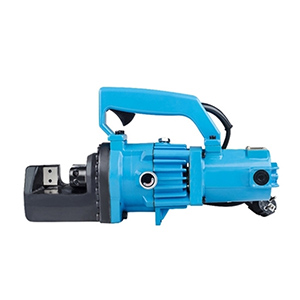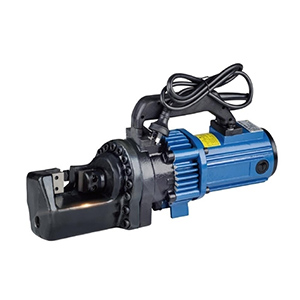What are the Types of Rebar Cutters?
The rebar cutter, also known as steel bar cutter, is a tool used to cut steel bars and is indispensable mechanical equipment in the construction industry. These machines are designed to accurately and efficiently cut steel bars into desired lengths. In the past, manual cutting was the only option, but with the advent of rebar cutters, the process has become much easier and quicker.
There are several types of rebar cutters available in the market, including horizontal rebar cutters, vertical rebar cutters, electro-hydraulic rebar cutters, and manual hydraulic rebar cutters. Each type has its own advantages and disadvantages, making it important to choose the right type of rebar cutter for a specific task. Now, ATO will briefly analyze the structure and working principle of the above rebar cutters for you.


Horizontal Rebar Cutter
Structure: This kind of rebar cutter is mainly composed of a motor, transmission system, reduction mechanism, crankshaft mechanism, body, and cutting knife, which is suitable for cutting 6~40mm universal carbon steel bars.
Working Principle: Driven by a motor, the eccentric shaft is rotated by a V-belt pulley and cylindrical gear reduction. A connecting rod is installed on the eccentric shaft, which drives the slider and the moving blade to reciprocate during the sliding of the machine base, and is made of carbon tool steel and heat treatment with the fixed blade fixed on the machine base. Generally, the front angle is 3°and the rear angle is 12°.
Vertical Rebar Cutter
Structure: Vertical rebar cutters are used in the steel bar processing production line of the component prefabrication factory.
Working Principle: The flywheel shaft is driven by the power of the motor through a pair of pulleys, and after being decelerated by three-stage gears, the eccentric shaft is driven by the sliding key clutch to realize the reciprocating movement of the moving blade and cooperate with the moving blade to cut steel bars. The clutch is controlled by the handle to combine and disengage and to control the up and down movement of the movable blade. The pressing device is rotated by the hand wheel, which drives a pair of helical gears with internal reminder threads to move the screw up and down, and compresses the steel bars of different diameters.
Electro-hydraulic Rebar Cutter
Structure: The electro-hydraulic rebar cutter is mainly composed of an electric motor, hydraulic transmission system, control device, fixed blade, etc.
Working Principle: The motor drives the eccentric shaft to rotate, and the eccentric surface of the eccentric shaft retreats and the plunger it contacts for round-trip movement so that the plunger pump generates high-pressure oil into the cylinder body, pushes the piston in the cylinder, drives the moving blade forward, and cuts the steel bar with the fixed blade fixed on the support.
Manual hydraulic Rebar Cutter
Structure: The hydraulic system of a manual hydraulic rebar cutter is composed of a piston, plunger, hydraulic cylinder, pressure rod, pull-out pin, return spring, oil storage barrel and oil suction valve, and other components.
Working Principle: First tighten the oil drain valve clockwise, lift the pressure rod, the plunger is lifted, the oil suction valve is opened, and the hydraulic oil enters the oil chamber. Lifting the pressure rod, the hydraulic oil is compressed into the cylinder cavity, thereby pushing the piston forward, and the moving knife installed at the front end of the piston can cut the material. Immediately after the material is broken, the oil valve is screwed in a counterclockwise direction, and under the action of the return spring, the pressure oil flows back into the oil chamber, and the cutter is automatically retracted into the cylinder. And so on and so forth, do the ribbing cutting. It is suitable for cutting all kinds of ordinary carbon steel, hot-rolled round steel, rebar, flat steel, and square steel in construction projects.
In conclusion, rebar cutters are essential machines in the construction industry. They offer several advantages over manual cutting, including efficiency, accuracy, high speed, and ease of use. By choosing the right type of rebar cutter for a specific task, construction professionals can make the cutting process much easier and more efficient.
ATO provides you with more information about steel bar cutting machines. If you want to know more, please contact us.

